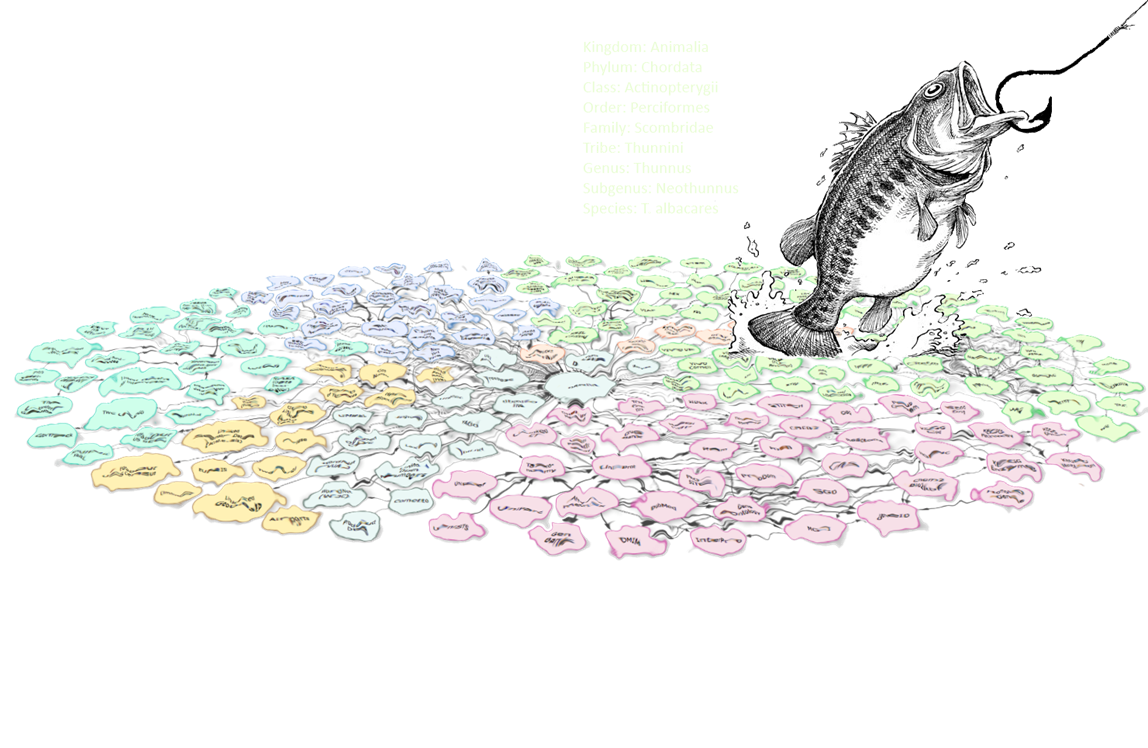Semantic technologies cluster

Main Links
- Wiki page for the End User Products
- Wiki page for the Big picture
- Link to the slide presentations of the Sep 2013 review: todoInJuly2013
Related Links
- iMarine Board Work Plan [1]]
- Publishing guidelines for Data and Services Providers [2]
iMarine Partners Position
The iMarine project promotes scientific research to be operated in interconnected Virtual Research Environments (VREs). D4ScienceAn e-Infrastructure operated by the D4Science.org initiative.-II (D4SII) has successfully provided the infrastructure and an initial toolset to enable scientists to use distributed computational power and shared digital resources. The interoperability of D4SII VREs reflected the degree of systems connectivity implemented at infrastructure level. In iMarine semantic technologies offer an additional approach to system interoperability based on connectivity implemented at data and metadata level.
The motivation for enforcing the use of semantic technologies in iMarine is to complement the organization and consumption of digital resources created inside and outside the infrastructure.
The three actions to make semantic contribution concrete are: the harmonization of foreign coding systems, the semantic annotation (ref T6.3) of digital resources, and information retrieval based on semantic search; these represent substantial innovations with respect to D4SII. The CoPs adhering to this approach will have their information assets linked, and be relieved from the commitment to move the data in to a shared space. Linked information is retrievable not only from within, but also beyond the boundaries of the iMarine infrastructure.
The integration of legacy information systems, brings in years of CoPs activity results (ref. T6.2). With the semantic approach it becomes possible to implement the access to iMarine information assets as one coherent source of facts, rather than a silo of collected contents. This second innovative contribution for the project represents the possibility to consume knowledge underlying users’ needs similarly expressed as:
“which amount of fish was caught in 2008 in the Danish Exclusive Economic Zone by vessels that practice fishing with traps, and have signed fishing agreements with the United Kingdom?”
Three classes of users are targeted: data managers, scientists, and decision makers. Data managers need to process data, and rely on services that harmonize across existing coding systems. Scientists is to collect and access field data, and rely on an effective data exchange. Decision makers have a need to read the explanation of scientific evidence, provided by retrieving relevant documentation.
The semantic approach does not require the replacement of existing technology stacks (from data schemas to engineering components and clients), instead, it adds a richer description of existing data, providing the glue for the co-existence of heterogeneous equivalent formats. It completes existing technological approaches, with a pick in the “Future Web ” trends.
The first request to the partners in the iMarine project, and the wider CoPs is to participate in to a thinking process considering iMarine information asset as part of bigger life science data framework contributed by institutions worldwide. The sooner iMarine enters this virtuous loop of data “sharing”, and it will leverage the effort of companion communities joining the Linked Open Data philosophy.
In the following we describe the streams of operation to start creating the semantic support in iMarine. We indicate the actors, to deepest details possible, or the proposed scenarios of application of such support. Each section is described with some background information, proposed measure and anticipated impact to provide with a complete overview. We also indicate which WP can host the activities described so to facilitate the intervention of key people in the project. The content of the sections below are considered as starting point to raise more focused discussions on open issues.
The main purpose of the Cluster work plan (template here) is to provide the iMarine Board with a management tool usable as a framework for planning activities, and that can serve as a guide for carrying out that work. The scope is thus the interface between the Board and the project's Work Packages activities. After drafting, a work plan needs approval from the iMarine Board, following the Board procedures.